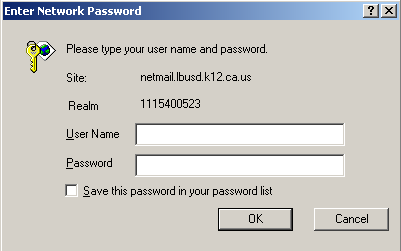BY ANDERS FOGH RASMUSSEN “MISSILE DEFENSE—NATO’S SHARED MISSION” LAST
ENTRY FORM FOR THE 20192020 LANE ANDERSON AWARD1432 PROBLEM SET 1 SOLUTIONS M ANDERSON (PARTIALLY BY
1960 2ND JANUARY GEORGE ANDERSON [OR] TRANENTALLOA ATHLETIC FRANK
2017 MEDICARE COMPLIANCE PROGRAM GUIDELINES ATTESTATION ANDERSON HOSPITAL IS
20172018 GREGG ANDERSON UNIFORM POLICY UNIFORMS STUDENTS ATTENDING GREGG
2020 GANZ ANDERS ALS GEDACHT EINE PANDEMIE HAT
By Anders Fogh Rasmussen
By Anders Fogh Rasmussen
“Missile defense—NATO’s shared mission”
Last month, NATO conducted a historic exercise: the first comprehensive test of the alliance’s new missile-defense capability. A U.S. ship, radar and satellite, as well as interceptor batteries from Germany and the Netherlands, conducted a series of simulated engagements to test the alliance’s ability to defend against missile attacks. The test was successful.
None of the countries involved in the exercise could have dealt with the simulated attacks alone. But together, working under NATO command and control, Allies could—and did. The exercise was a clear demonstration of trans-Atlantic solidarity in action. It also shows NATO’s continuing determination to protect our members’ territory and populations from attack and the threat of attack.
Today, we face a grave and growing threat from the proliferation of ballistic-missile technology. More than 30 countries have acquired such technology or are working to acquire it. Some already have missiles that can be fitted with conventional warheads or weapons of mass destruction, and some of these missiles have the range to reach Europe. That is why the United States and European Allies are working together within NATO to develop appropriate responses.
NATO allies already have a range of proven tools at their disposal: diplomacy, disarmament and deterrence. But we must also be ready to respond to the situation where a potential aggressor, armed with ballistic missiles, resists diplomacy, rejects disarmament, and refuses to be deterred.
That is why we agreed at the 2010 Lisbon Summit to develop a missile defence capability to defend NATO’s European populations, territory and forces. That capability is now coming together.
The U.S. and a number of European allies have announced their intention to contribute interceptors, sensors and control systems, as well as to host key parts of the overall system. At our next summit, in Chicago on May 20-21, we will declare an interim capability that brings these individual contributions together under NATO command and control.
This interim capability will provide the alliance with a limited, but operationally meaningful and immediately available capability against a ballistic-missile threat. It is the first step, but a real step, toward the goal of providing full coverage for all NATO populations, territory and forces in Europe.
I have seen this plan referred to as “the U.S. defending Europe.” The U.S. contribution to NATO’s missile defense is indeed vital. But this is true trans-Atlantic teamwork: North American and European Allies working together to make the whole alliance more secure.
The U.S. contribution reflects America’s vital interest in security and stability in Europe. The Continent is home to America’s most committed and capable allies, to say nothing of countless American businesses, citizens and forces. That is why the U.S. has offered to place missile defence assets in Europe under NATO command and control, as America’s contribution to the alliance’s defence.
The first elements of the U.S. network of satellites, sensors and sea-based interceptors have already been deployed to Europe. The other elements, including land-based interceptors, will be deployed progressively in the coming decade. It is, and will remain, the most substantial single national contribution to missile defense—and it is a testament to America’s unwavering commitment to our alliance.
But from the very beginning, the whole point of NATO missile defense has been to go beyond the U.S. contribution. European allies are fully involved—supporting it politically, sharing the costs, and providing substantial assets of their own. Many different assets, from many different European allies, are being drawn together with the U.S. assets into a common, integrated and shared NATO capability.
The alliance has already developed an initial command-and-control system to link the U.S. assets with sensors and interceptors provided by European allies. This part of the system is designed by NATO, paid for by NATO, and operated by NATO. After Chicago, we will continue our work to expand the system toward full operational capability. The Netherlands has already announced plans to upgrade four air-defense frigates with missile-defense radar. France plans to develop an early-warning capability and long-range radar. Germany has offered Patriot missile batteries, and it is hosting the NATO command-and-control at Headquarters Alliance Air Command in Ramstein. Turkey, Romania, Poland and Spain have all agreed to host U.S. assets. And I expect more announcements in the months and years ahead.
NATO missile defense goes beyond any one country. It is based on solidarity and cooperation between 28 nations, on both sides of the Atlantic—nations that face a common threat, share common values, and are committed to defending our common security.
Mr. Rasmussen is secretary-general of NATO.
2021 VIOLENT CRIME ENFORCEMENT TEAM (VCET) COMMANDERS ANOKAHENNEPIN NARCOTICS
24 TACTICAL MEDICINE TRAINING FOR SEAL MISSION COMMANDERS 12
35 HTTPWWWANDERSSTUDIOCOMDART430DNCINTROHTM MY WEB SITE ATTEMPTS TO RAISE AWARENESS
Tags: anders fogh, defense—nato’s, shared, rasmussen, mission”, anders, “missile
- LIFE COOPERATION ENGLISH PROJEKT PRINCIPI ZA MOŽNO OSNOVANJE
- INTERNATIONAL SPONSORING LEAD FORM PLEASE FILL IN THIS
- RESPUESTA DEL ESTADO DE CHILE DOCUMENTO ELABORADO POR EL
- MESA 131 LAS REVISTAS COMO OBJETO DE INVESTIGACIÓN PERSPECTIVAS
- NOTA DE PRENSA JULIO 2014 LLEGA WIPP EXPRESS FÓRMULA
- REVISED MODEL FORM OF BANK GUARANTEE BOND IN CONSIDERATION
- “MUERTE DEL JEFE” POR ITZIAR ORTEGA FUENTE DATOSPYMES NO
- WYPOSAŻENIE PRACOWNI SPECJALISTYCZNEJ W SZKOLE KSZTAŁCENIA ZAWODOWEGO NAZWA SZKOŁYPLACÓWKI
- CITY UNIVERSITY OF LONDON SENATE REGULATION 19 ASSESSMENT REGULATIONS
- 2 HỘI ĐỒNG NHÂN DÂN T ỈNH KON TUM
- REGLAMENTO DE CHEQUE REGALO DE LOS ALTOS ALTO
- НАЦРТ ЗАКОНА О ЗАШТИТИ И УНАПРЕЂИВАЊУ ЗЕЛЕНИХ ПОВРШИНА I
- TEACHER’S GUIDE GRADES 5 TO 12 FREEDOM’S IRONY TRAILS
- BILL OF SALE TO TRANSFER A VESSEL STATE OF
- DIENOS PIETŪS KOVO 9D – KOVO 13D 1130
- POLICY CONSULTANT BRIEF CONSULTANT’S BRIEF PROFORMA RELATED INFORMATION
- XXII A FIRA MONOGRÀFICA DE FORJADORS I ARTISTES DEL
- O BČINA GORIŠNICA GORIŠNICA 83 A 2272 GORIŠNICA
- C OMISIÓN INFORMATIVA DE URBANISMO PATRIMONIO CONTRATACIÓN Y SEGUIMIENTO
- ROZDZIAŁ IX WYMAGANIA EDUKACYJNE Z POSZCZEGÓLNYCH PRZEDMIOTÓW NA POSZCZEGÓLNE
- TỔNG HỢP TRẢ LỜI VƯỚNG MẮC KIẾN NGHỊ TRONG
- OVER DE VREUGDEVOLLE EN LIJDENDE UNIVERSELE LIEFDE EN HET
- FICHA DE INSCRIPCIÓN Y Nº CUENTA DATOS DEL ALUMNO
- OCTROI REFUS – DU PERMIS CERTIFICAT D’URBANISME N°2
- CHARTE RÉSEAU PARTENARIAL DES DONNÉES SUR LES ZONES HUMIDES
- KONTROL AF VIDEO INDEXFILER STATSVEJE 2004 11 JUNI 2004
- ŚWIĘTO KIELC W MUZEUM ZABAWEK I ZABAWY SPEKTAKLE TEATRALNE
- EXPEDIENTE CONTRATACIÓN 272016 PLIEGO DE PRESCRIPCIONES TÉCNICAS PARA LA
- NZQA UNIT STANDARD 18337 VERSION 5 PAGE 2 OF
- CACHE SIMULATOR BY MOHAMMED ABUJAMOUS RAZI ALSAYED ANNAJAH NATIONAL
 DISTRIBUČNÍ LIST D 19 011 PRAŽSKÉ ORGIE DVA BOUŘLIVÉ
DISTRIBUČNÍ LIST D 19 011 PRAŽSKÉ ORGIE DVA BOUŘLIVÉ 16 S YGN AKT III AUA 89710 W
16 S YGN AKT III AUA 89710 W OVERVIEW OF DELAYED MYOCARDIAL ENHANCEMENT IN CARDIAC MRI MAUREEN
OVERVIEW OF DELAYED MYOCARDIAL ENHANCEMENT IN CARDIAC MRI MAUREEN ZAKON O MEĐUNARODNIM MJERAMA OGRANIČAVANJA ČLANAK 1 OVIM SE
ZAKON O MEĐUNARODNIM MJERAMA OGRANIČAVANJA ČLANAK 1 OVIM SEF338 ESCRITO SOLICITANDO LA NULIDAD DE LA TRABA SOBRE
DZP2711U2019 BRZESKO DNIA 04042019 R ZAWIADOMIENIE O WYBORZE NAJKORZYSTNIEJSZEJ
GACETA UNA082010 III 14 DE MAYO DEL 2010 SCU9142010
CORRECT ANSWERS FOR EUROPEAN EXPLORATION AND COLONIZATION STUDY GUIDE
PŘEHLED JUDIKÁTŮ ESD O ROVNÝCH PŘÍLEŽITOSTECH ŽEN A MUŽŮ
RELACIONES ENTRE EL DERECHO INTERNACIONAL Y EL DERECHO DOMÉSTICO
 STUDENT EMAIL – NETMAIL ACCESS ENTER THE URL
STUDENT EMAIL – NETMAIL ACCESS ENTER THE URL22 GENOSSENSCHAFTSVERTRAG I FIRMA UND SITZ 1) DIE FIRMA
VACANCY ANNOUNCEMENT QUITMAN SCHOOL DISTRICT 104 EAST FRANKLIN STREET
 PROYECTO DE LEY N° DE 2016 SENADO “POR
PROYECTO DE LEY N° DE 2016 SENADO “PORVI OBRAZLOŽENJE OSTVARENJA PRIHODA I PRIMITAKA RASHODA I IZDATAKA
FORM 7437 COURTS OF JUSTICE ACT ORDER TO ACCEPT
 URZĄD MIEJSKI W TCZEWIE PLAC M J PIŁSUDSKIEGO 1
URZĄD MIEJSKI W TCZEWIE PLAC M J PIŁSUDSKIEGO 1ÉSZAKMAGYARORSZÁGI KÖRNYEZETVÉDELMI ÉS VÍZÜGYI IGAZGATÓSÁG MISKOLC VÖRÖSMARTY U 77
PLAKA TANIMA SISTEMI ŞARTNAMESI GENEL ÖZELLIKLER 1 TÜM UYGULAMALAR
 光學作業 應物三甲 0932346 曾學志 PROBLEM 121 WHAT IS ANGULAR
光學作業 應物三甲 0932346 曾學志 PROBLEM 121 WHAT IS ANGULAR